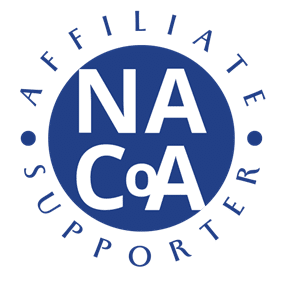LEARNING FROM OUR CLIENTS:
The Story of Hearts and Strikes

This blog comes to you through a partnership between NACoA Affiliate GLAD House’s Executive Director Michelle Cox and NACoA.
In the field of therapy and counseling, it’s common to think of the relationship as one-sided, with professionals imparting wisdom and guidance to their clients. However, my experience has shown me that learning often flows both ways. One of the most profound lessons I ever learned came not from a textbook or a seminar, but from a remarkable couple I worked with 15 years ago—Beth and Todd.
The Initial Intervention
Beth and Todd were in recovery and seeking guidance on how to manage the behavior of their two daughters: Sam and Kayla. As a relatively young therapist at the time, I was eager to provide them with effective strategies. I spent considerable time creating a giant behavior chart – complete with Velcro attachments – which I presented to them with great pride during one of our sessions. Beth and Todd accepted it graciously, and I was eager to hear about its success at our next meeting.
A Humbling Moment
Two weeks later, Beth and Todd returned to my office. When I asked how the behavior chart was working, they exchanged reflective looks before informing me that they were not using it. I was a bit crushed, having invested so much effort into the chart. They explained that the chart was not mobile, making it difficult to address behaviors outside the home. Additionally, Sam and Kayla found the chart frustrating and often attempted to tear it down from the fridge.
Hearts and Strikes: A New Approach
Beth and Todd then shared a system they had developed themselves—one they called “hearts and strikes.” This system was simple, yet effective. When one of their daughters engaged in undesirable behavior, they received a strike. Three strikes in a day resulted in an age-appropriate consequence, such as losing screen time or a favorite toy going into time-out. If the third strike occurred at the end of the day, the consequence carried over to the next day.
This system drastically reduced the amount of yelling in their home. Instead of raising their voices, Beth and Todd would calmly say, “That’s a strike.” It also facilitated better communication between them about their daughters’ behaviors, as they could easily keep track of the number of strikes.
To balance the system, they introduced hearts, which were given for behaviors they wanted to encourage, like helping a sibling, trying new foods, or completing homework. Hearts could cancel out strikes, promoting positive reinforcement. They focused on one day at a time, a mantra that also supported their recovery journey.
Rewards and Positive Reinforcement
Beth and Todd emphasized that rewards should not be materialistic. Instead, they opted for special family time—watching a movie, getting pizza, or visiting their favorite park. This approach fostered a sense of connection and shared joy, further reinforcing positive behavior in their children.
A Lesson for Life
Years later, when I had my own children, I initially tried using a behavior chart. It lasted about a month before I remembered the hearts and strikes system Beth and Todd had taught me. This method worked wonders for my own family, and I used it for over ten years.
Beth and Todd’s honest communication and advocacy for a system that worked for their family taught me an invaluable lesson. It’s a reminder that as professionals, we must remain open to learning from our clients. Their lived experiences and insights can lead to innovative solutions that we might not have considered.
At NACoA, We Believe in the Power of Mutual Learning.
Beth and Todd’s story is a testament to the profound impact that our clients can have on our professional practice. Their hearts and strikes system is just one example of how client feedback can shape and improve therapeutic approaches.
Your Invitation…
We encourage all professionals and affiliates to listen closely to their clients and be open to the lessons they offer. By doing so, we can create a richer, more effective environment for growth and recovery with our clients and our communities. NACoA invites our affiliates, supporters, and followers to share your successes when working with COAs. Email us today!
